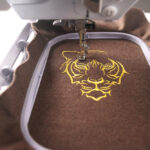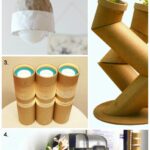I. Understanding Rain Diverters: Purpose and Functionality
II. How Upcycling Enhances Rain Diverter Efficiency
III. Step-by-Step Guide to Installing an Upcycled Rain Diverter
Understanding Rain Diverters: Purpose and Functionality
Hey there! Have you ever noticed how rainwater seems to have a mind of its own? One minute, it’s gently falling from the sky, and the next, it’s pooling in places where you definitely don’t want it. That’s where rain diverters come in! These unsung heroes of home drainage systems play a vital role in managing rainwater effectively.
What Is a Rain Diverter?
In simple terms, a rain diverter is a device that helps direct rainwater away from areas where it can cause damage. Whether it’s a roof, a gutter system, or even a garden, these clever contraptions ensure that water flows precisely where it’s supposed to go.
Why Do You Need a Rain Diverter?
Imagine this: It’s a heavy downpour, and water is cascading off your roof. Without a rain diverter, that water could cascade right down to your foundation, potentially leading to cracks and leaks. Not to mention, you could end up with a soggy lawn or a flooded basement!
Here are a few compelling reasons why you might want to consider installing a rain diverter:
- Protect Your Property: Directing rainwater away from your home prevents costly damage. It can save you from expensive repairs later on.
- Improve Aesthetics: A well-placed rain diverter can enhance the visual appeal of your home while managing water flow.
- Conserve Water: By redirecting rainwater to barrels or gardens, you can make efficient use of this natural resource, reducing your water bill in the process!
- Prevent Erosion: Controlling where the water flows helps preserve your landscaping and prevents soil erosion.
How Do Rain Diverters Work?
Now you might be wondering, how do these nifty gadgets actually work? Well, it all comes down to their design and functionality. Rain diverters typically consist of a series of channels or tubes that collect rainwater and guide it away from your home. They can come in various styles, from simple gutters to more complex systems that use gravity and slope to ensure proper flow.
Some rain diverters even incorporate filters to catch debris, which helps maintain a clear path for the water. This functionality is crucial, as clogged diverters can lead to overflow and negate the very benefits they were designed to provide.
Final Thoughts
So, there you have it! Rain diverters may not be the fanciest home feature, but they play a crucial role in protecting your property from water damage. Understanding their purpose and functionality not only helps you appreciate their value but also empowers you to make informed decisions when it comes to home maintenance. Whether you’re looking to install one or simply want to improve your rainwater management, knowing how these devices work is the first step in the right direction. Stay tuned for more tips on enhancing their efficiency!
How Upcycling Enhances Rain Diverter Efficiency
Have you ever thought about how something old and unused could breathe new life into your home? Let’s chat about upcycling and how it can not only be a fun project but also boost the efficiency of your rain diverter. You might be wondering, “What’s a rain diverter, and why does my old stuff matter?” Let’s dive into it!
First, let’s quickly recap what rain diverters do. Their primary role is to channel rainwater from your roof into a designated area, preventing water from pooling around your foundation or damaging your landscaping. But did you know that the materials you use can significantly influence how well they work? This is where the art of upcycling comes in!
What is Upcycling?
Upcycling is the process of taking items that might be considered trash or simply unwanted and transforming them into something useful, valuable, or aesthetically pleasing. It’s a fantastic way to keep materials out of the landfill, save money, and get creative!
Benefits of Upcycling for Rain Diverters
Now, let’s explore how upcycling can enhance the efficiency of your rain diverter:
- Customization: With upcycled materials, you have the freedom to design a rain diverter that fits your space perfectly. Whether it’s an old piece of gutter or a repurposed plastic container, you can craft something that not only works well but also looks great!
- Durability: Many upcycled materials, like metal or sturdy plastic, can withstand the elements better than some commercially available options. This means your rain diverter can last longer and perform better, saving you money in the long run.
- Cost-Effective: Why spend a fortune on a brand-new rain diverter when you can use materials you already have? Upcycling allows you to save money while still making effective improvements to your home’s drainage system.
- Environmental Impact: By upcycling, you’re playing your part in reducing waste. Every item you divert from the landfill is a step toward a more sustainable lifestyle. Plus, you’re conserving resources that would otherwise go into creating new materials.
- Creativity and Personal Touch: Upcycling fosters creativity! You can add your unique spin to your rain diverter, making it a conversation piece in your yard. It’s a great way to showcase your personality and craftsmanship.
Materials to Consider for Upcycled Rain Diverters
So, what can you use? Here are some ideas to get those creative juices flowing:
- Old gutters or downspouts
- Plastic bottles cut and shaped into diverters
- Wooden pallets or crates for rustic designs
- Metal sheets or trays for a modern touch
- Old kitchenware, like colanders or bowls, that can channel water effectively
Conclusion
In conclusion, upcycling not only enhances the efficiency of your rain diverter but also transforms it into a personal project filled with creativity and sustainability. You’ll enjoy the satisfaction of knowing you’ve made a functional item from something that might have otherwise been discarded. So, roll up your sleeves, gather those old materials, and let’s make your rain diverter a shining example of upcycled ingenuity!
Step-by-Step Guide to Installing an Upcycled Rain Diverter
Ready to give your garden a boost and help the environment at the same time? Installing an upcycled rain diverter is a fun and rewarding project! Not only will you be collecting rainwater for your plants, but you’ll also be reusing materials that might otherwise go to waste. Let’s dive into the step-by-step process of getting your upcycled rain diverter up and running!
What You’ll Need
Before we start, let’s gather some supplies. Having everything on hand will make the process smooth and enjoyable. Here’s a quick list:
- Upcycled materials (like a plastic bottle, old gutter, or large bucket)
- Tools (screwdriver, drill, screws, or nails)
- Sealant or weather-resistant tape
- Hose or tubing (for directing water)
- Level (to ensure proper alignment)
Step 1: Choose Your Location
Start by selecting the best spot for your rain diverter. Look for an area where rainwater naturally flows, like beneath your downspout. Make sure it’s close enough to your garden or plants so that you can easily use the collected water.
Step 2: Prepare Your Upcycled Material
If you’re using a plastic bottle or bucket, clean it thoroughly to remove any residue. If you’re repurposing an old gutter, ensure it’s free of debris. You want your rain diverter to be as efficient as possible!
Step 3: Create the Diverter Mechanism
Now it’s time to make the diverter! If you’re using a plastic bottle, cut it in half. Attach the bottom half to the downspout, angling it to ensure rainwater flows into it. For a gutter, cut it to size and fix it to the side of your house, making sure it slopes downward.
Remember to use sealant or weather-resistant tape around the edges to prevent leaks. Every drop counts!
Step 4: Direct the Water
Next, you’ll want to set up a way to direct the water from your diverter to your plants. This is where the hose or tubing comes in handy. Attach one end to the diverter and run the other end to your garden. Make sure it’s secured and won’t move around during a rainstorm.
Step 5: Test Your Setup
Before the rain hits, it’s a good idea to test your diverter. Pour some water into the system and watch how it flows. This will help you identify any potential issues before they become bigger problems. Make adjustments as necessary!
Step 6: Enjoy the Benefits!
Now that you’ve installed your upcycled rain diverter, it’s time to sit back and enjoy the benefits. You’re not just saving water; you’re also helping your plants thrive and contributing to a greener planet. Plus, every time it rains, you can smile knowing that you’ve made a positive impact!
If you follow these steps, you’ll have an efficient and eco-friendly rain diverter in no time. Happy upcycling, and let the rain work for you!





Comments